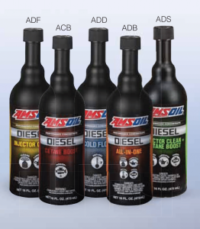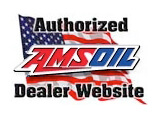
28 Jul Ultra-Low Sulfur Diesel Provide Insufficient Lubricity
Thirteen years ago, the US Environmental Protection Agency (EPA) mandated reduce sulfur content diesel fuel in 2006. The EPA knew sulfur helps protect the fuel pump and injectors from failure.
The problem of diesel lubricity is even more prevalent now as modern diesels demand even more from the fuel pump and injectors than ever before, increasing the potential for failure.
ULSD Challenges
Today’s ultra low sulfur diesel fuel provides significantly reduced lubricity – a critical property in controlling fuel pump and injector wear. While diesel fuel has traditionally at high lubrication properties, the desulfurization process used to strip the diesel fuel of the sulfur content to meet USLD requirements also strips the fuel of some of its organic compounds responsible for lubrication. The ASTM D975 diesel-fuel standard mandates a minimum lubricity level. The Engine Manufacturing Association (EMA) wants the standard to provide for increased lubricity, but lost out on the control of the specification.
Since 2006 ULSD has accounted for nearly all diesel available in North America because the EPA mandated reduce sulfur to curb harmful emissions. ULSD now contains a maximum of just 15 ppm sulfur, and beds of fuel that up to 5000 possibly itself prior to EPA regulations.
Waxes in diesel fuel lubricate the fuel pump and injectors, helping to fight wear. Without them, the highly engineered components in modern diesels, particularly high pressure common rail (HPCR) engines, can wear out and cost thousands in repairs. They can also develop deposits that interfere with an optimum spray pattern, reducing power and fuel economy. The editors of diesel power magazine covered the problem of ULSD in the April and May 2019 issues. As reported, the Bosch CP4.2 fuel pump that come stock on a 2011 to 2016 Duramax engines has led to thousands of catastrophic failures.
It’s culminated in class-action lawsuits in Texas and California against Bosch, GM, Ford and other vehicle manufacturers on behalf of the individual diesel owners whose vehicles use that pump. When the CP4.2 fuel pump fails, it instantly contaminates the entire fuel system metal particulates costing $8000-$12,000 in repairs. The magazine reiterates what Amsoil has been saying for years: “The way to be proactive in protecting the CP4.2 equipped diesel from an early demise is being diligent about using fuel additives that add lubricity with every fill up”.
The CP4.2 pump is said to fail because of two reasons:
- Its designed with about 20% reduce flow volume than the previous generation pump requiring it to work even harder.
- ULSD isn’t providing enough lubricity.
Amsoil Performance Testing
Amsoil testing of based fuels across the US confirms the second point. ASTM D975 requires diesel fuel to limit the wear scar in lubricity testing to 520 microns. The EMA sets stricter requirements of 460 microns. As the chart shows, many of the fuel (blue bars) failed to limit wear to 520 microns and none of them met the EMA’s for 460 micron limit.
Fuel treated with Amsoil diesel all-in-one performed far better (red bars). The “all-in-one” not only met the ASTM D975 standard, it also met the stricter EMA lubricity requirements. You can find the same technology in diesel injector and diesel injector clean plus cetane boost. Amsoil diesel additives deliver a healthy boost in lubricity to help lubricate diesel fuel pumps and injectors. The extra lubrication helps prevent wear and fuel pumps and injectors I strongly recommend that all diesel owners use Amsoil diesel fuel additives with every tank of fuel.

